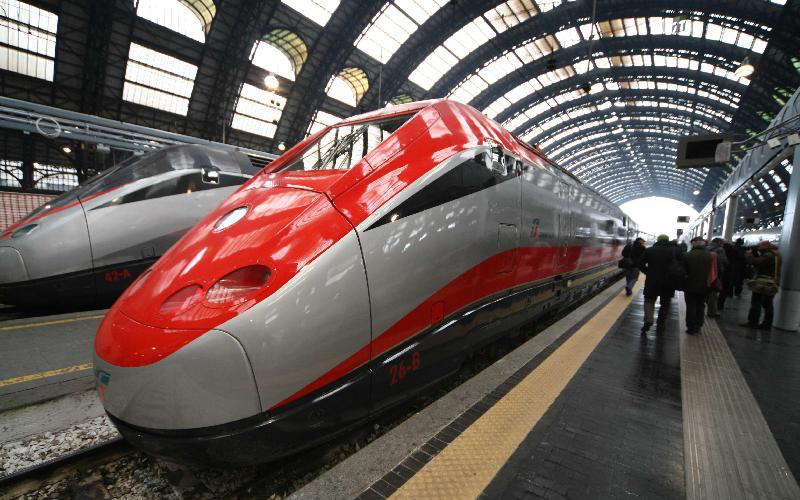
In the Shadow of Zheng He: China’s One Belt and One Road Policy
“The One Belt and One Road initiative is a long-term macroscopic program of strategic development for the entire State.” – Zhao Xijun, Deputy Dean of School of Finance, Renmin University, Global Times, Dec 28, 2014
The Chinese flag hangs in fraternal union with Serbia as one crosses the Zemun-Borča bridge, completed last month, and now named Pupinov most. It was yet another infrastructure gem in what is becoming typical of Beijing’s global investment push, a policy typified by big spending and the reiteration of connectedness. Where a country is short of cash in terms of the big projects, a Chinese loan is peeking around the corner to cover the cost.
Not that this is done out of heart warming altruism. The visionary functionaries in Beijing have been dreaming of revivals and resurrections over what has come to be known as the “one belt, one road” policy. The language of the New Silk Road, more than a patch on the ancient Silk Road strategy of the Han Dynasty, has become something of an accelerant drive in planning, the hallmark of President Xi Jinping’s still early tenure.
Former UN under-secretary general and current Indian MP, Shashi Tharoor, dipped into his history books in examining the visions of the current Chinese leadership.
The old Silk Road had both overland and maritime routes. Goods and ideas snaked along them, be they tea, gunpowder, paper, Buddhist scripture, and music. China itself obtained access to plants, medicines, astronomy, and the Buddhist and Islamic faiths.
Tharoor sees in Xi a historical echo, that of the Chinese Ming Admiral and eunuch, Zheng He, who moved across the Indian Ocean over the course of seven times in the early fifteenth century. He did so with a vast armada that would have dwarfed its European contemporaries. Women in Kerala could thank the Admiral for his efforts – the wok became a vital cooking instrument; innovative fishing techniques were introduced – all before the Portuguese got their vessels wet.
Others, such as the retired submarine commander Gavin Menzies, see in Zheng the origins of world discovery, putting forth a theory so stretched it suggests that the intrepid eunuch was in Australasia and the Americas well ahead of either Christopher Columbus or James Cook. Chinese silk road romanticism is a vast and variable creature – and everyone is wanting to cash in on it.
Near the Sri Lankan coastal town of Galle, Zheng erected a stone tablet, translated into Tamil, Persian and Chinese with a grand aspiration: that Hindu deities bless his efforts to forge global trade and commerce, all for peace and prosperity.
In September 2013, when speaking at Nazarbayev University in Kazakhstan, Xi spoke of the creation of a “New Silk Road Economic Belt” that would run from China through Central Asia. Zheng’s maritime business is coming home to roost.
“To forge closer economic ties, deepen cooperation and expand development in the Euro-Asia region, we should take an innovative approach and jointly build an ‘economic belt’ along the silk road.” Xi saw this as a “great undertaking” that would benefit “all countries along the route.” Invariably, however, the context is overwhelmingly based on a development rationale: trade is good and infrastructure should be established for that end.
The economic belt, as Xi terms it, features such concrete manifestations as high-speed rail lines, highways, bridges, and Internet connectivity. These, in turn, will be complemented by port development that is already seeing a presence in the Mediterranean and Indian Ocean.
The second component to the strategy was put forward to the Indonesian parliament in October. China’s economic ties on land would be met by a “Maritime Silk Road of the 21st Century,” a venture that seeks to interlink Eurasia. In doing so, China will seek greater cooperation with ASEAN countries “to make good use of the China-ASEAN Maritime Cooperation Fund set up by the Chinese government.” The subtext here: placate neighbours over territorial disagreements with trade incentives and cash.
There are a few consequences in this vast push. There is a large and looming currency angle. China is seeking to push renminbi in its transactional value and encourage currency swap arrangements between the People’s Bank of China and other central banks. Then comes the culture side of things, a dividend that will supposedly be richer the more money is invested in the various regional economies along the belt and maritime routes.
Spearheading the drive are China’s state-owned enterprises, incarnated, modern Silk Road emissaries and vessels. “Chinese enterprises,” explained Zhang Jianwei, deputy chairman of the Shanghai International Chamber of Commerce, “are in urgent need of financial support to help them expand in overseas markets.” Such overseas expansion is required to develop Western Chinese markets, left behind by the growing cities and economic zones that have privileged the east.
As if to demonstrate the illusion of free markets and unsupported corporate agents, Jianwei noted how overseas economic expansion required sweetening government assistance. “The US did so in the 1950s and Japan followed suit in the 1960s and 1970s.”
The latest promise in terms of huge infrastructure visions comes in the form of a promise to fund a high speed rail line between Moscow and Beijing. The announcement came on Weibo, and is promised to cost in the area of 1.5 trillion yuan ($242 billion). Jon Stone, a journalist formerly working for Buzz Feed UK had a prediction: “New speed railway between Moscow and Beijing announced; it’ll be finished before HS2 (High Speed 2) gets to Birmingham.” Could be, given that developers will first have to deal with a very much in the way and treasured 200-old pear tree that is proving more than a snare.
